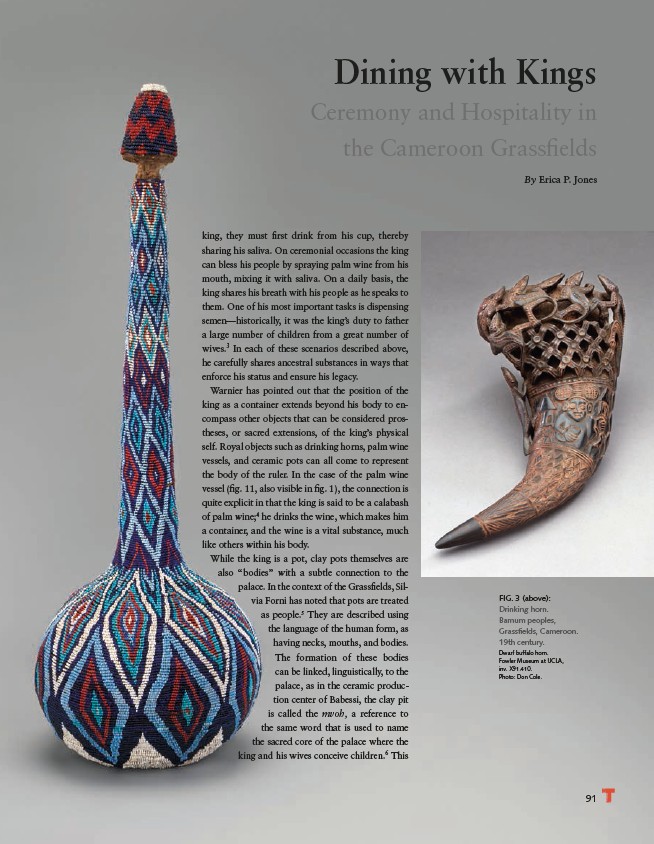
Dining with Kings
Ceremony and Hospitality in
the Cameroon Grassfields
By Erica P. Jones
91
FIG. 3 (above):
Drinking horn.
Bamum peoples,
Grassfields, Cameroon.
19th century.
Dwarf buffalo horn.
Fowler Museum at UCLA,
inv. X91.410.
Photo: Don Cole.
king, they must first drink from his cup, thereby
sharing his saliva. On ceremonial occasions the king
can bless his people by spraying palm wine from his
mouth, mixing it with saliva. On a daily basis, the
king shares his breath with his people as he speaks to
them. One of his most important tasks is dispensing
semen —historically, it was the king’s duty to father
a large number of children from a great number of
wives.3 In each of these scenarios described above,
he carefully shares ancestral substances in ways that
enforce his status and ensure his legacy.
Warnier has pointed out that the position of the
king as a container extends beyond his body to encompass
other objects that can be considered prostheses,
or sacred extensions, of the king’s physical
self. Royal objects such as drinking horns, palm wine
vessels, and ceramic pots can all come to represent
the body of the ruler. In the case of the palm wine
vessel (fig. 11, also visible in fig. 1), the connection is
quite explicit in that the king is said to be a calabash
of palm wine;4 he drinks the wine, which makes him
a container, and the wine is a vital substance, much
like others within his body.
While the king is a pot, clay pots themselves are
also “bodies” with a subtle connection to the
palace. In the context of the Grassfields, Silvia
Forni has noted that pots are treated
as people.5 They are described using
the language of the human form, as
having necks, mouths, and bodies.
The formation of these bodies
can be linked, linguistically, to the
palace, as in the ceramic production
center of Babessi, the clay pit
is called the mvoh, a reference to
the same word that is used to name
the sacred core of the palace where the
king and his wives conceive children.6 This